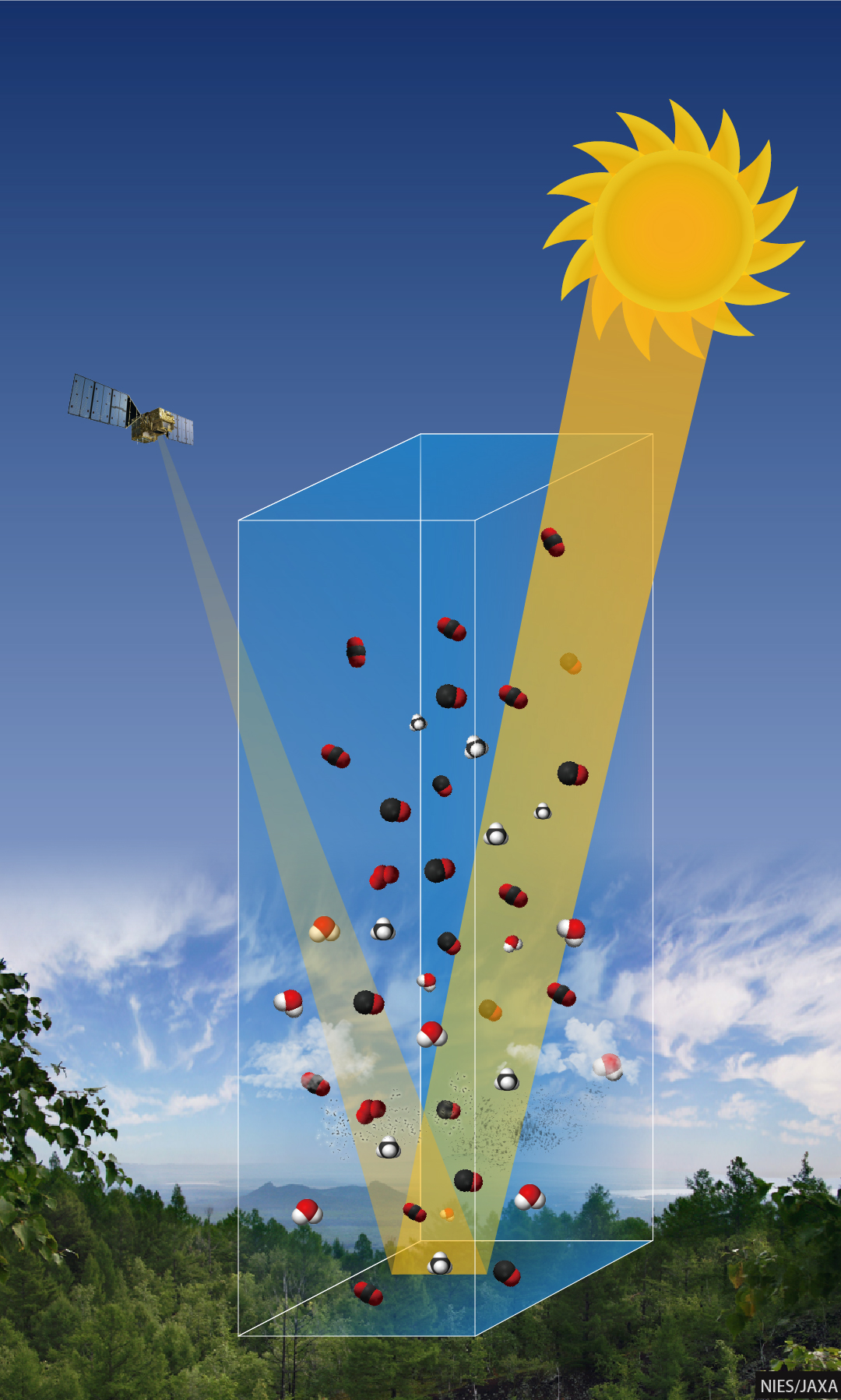![]() Observation
Observation
The molecules of greenhouse gases in the atmosphere absorb the light at specific wavelengths. Since the intensity of the absorption is basically determined by the number of the molecules in the atmosphere between the light source (sun) and the observer (GOSAT-2), we can inversely estimate the number of the molecules, and hence, the gas concentration through detailed analysis of the absorption features recorded in the FTS-2 data.
the light at specific wavelengths. Since the intensity of the absorption is basically determined by the number of the molecules in the atmosphere between the light source (sun) and the observer (GOSAT-2), we can inversely estimate the number of the molecules, and hence, the gas concentration through detailed analysis of the absorption features recorded in the FTS-2 data.
As FTS-2 covers wider spectral regions than existing satellites such as GOSAT and OCO-2, GOSAT-2 FTS-2 can obtain atmospheric concentrations of methane, water vapor, and carbon monoxide in addition to carbon dioxide.
GOSAT-2 orbits the earth 15 times a day and returns to the same place every 6 days. During this period, GOSAT-2 obtains FTS-2 data every 4 seconds. The total number of FTS-2 data reading over 6 days exceeds 100,000. The average distance between FTS-2 measurement points is typically shorter than 200 km at the equator.
Unfortunately, it is difficult to correctly estimate greenhouse gas concentration from FTS-2 data contaminated by clouds or thick aerosols. As such we must identify such erroneous FTS-2 data using other information including the cloud mask derived from CAI-2 data. To increase the yield of cloud-free data, a new technology, "Intelligent Pointing", to automatically identify clouds using real-time images from the camera within FTS-2 and avoid these by swiftly maneuvering the pointing mirror, is adopted in FTS-2.
It is expected that GOSAT-2 will obtain more than 600 greenhouse gas concentration data reading per day, which is two times more than GOSAT. The improved signal-to-noise ratio and extended along-track pointing angle for sunglint measurement over oceans will also contribute to an increase in gas concentration data yields.
In addition to the cloud mask for FTS-2, CAI-2 provides essential information on urban and transboundary air pollution. One of the unique features of CAI-2 is that it has two bands in the ultra violet (UV) region which are very effective in the characterization of aerosols over lands including urban areas. Note that GOSAT CAI has only one UV band and MODIS has none. The other unique feature of CAI-2 is its forward/backward viewing capability to avoid sunglint over oceans. By combining forward viewing data and backward viewing data, CAI-2 can monitor the status of transboudanry air pollution over oceans without the intrusion of sunglint.
Updated: August 2, 2016